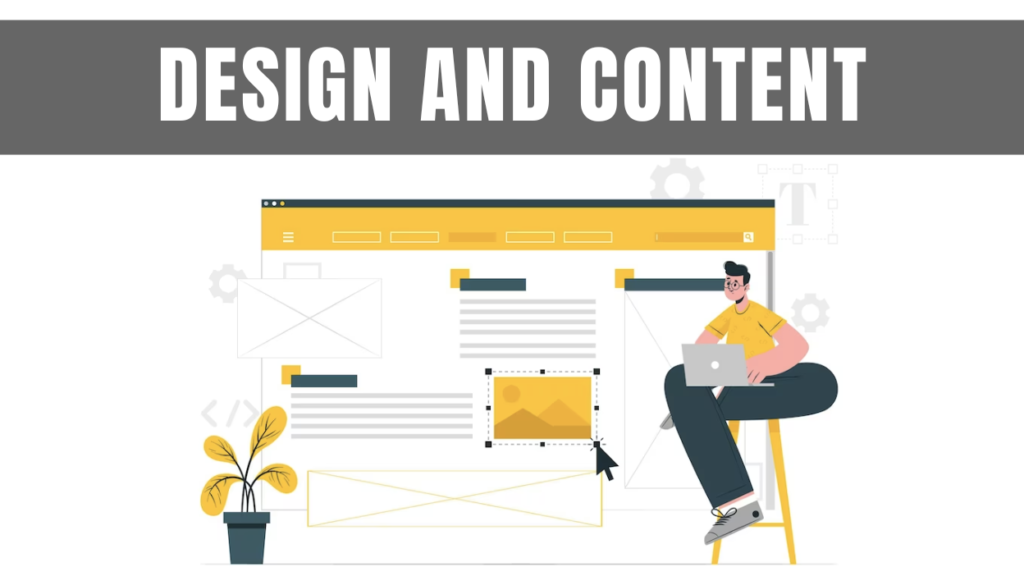How to Plan a Website in 7 Super Easy Steps?
Published By: Rishabh Dhiman Published On: 18 Sep 23 7 Min Read
Did you know that a staggering 75% of website visitors judge a site’s credibility based on its design as well as functionality? That’s right, the first impression matters, and it can make or break your online presence. Planning a new website can seem overwhelming, but don’t worry! We’re here to help you through the process of how to plan a website.
At Believ-In Technologies, we are experts in designing visually appealing websites that engage your audience. In this guide, we will walk you through the seven simple steps to effectively plan a website.
During this process, we will provide you with the necessary knowledge to plan a website that not only has an appealing design but also effectively achieves your goals.
Let’s get started!
Table of contents
-
How to Plan a Website Using Our 7-Step Framework?
- Define Your Goals and Purpose
- Identify Your Target Audience
- Choose a Domain Name and Hosting
- Plan Your Website Structure
- Design and Content
- Development and Testing
- Launch and Maintenance
- Conclusion
How to Plan a Website Using Our 7-Step Framework?
Planning a new website can be a complex undertaking. However, with our simple 7-step framework, you can simplify the process and develop a website that successfully connects with your audience.
Here’s your complete guide to planning your website’s structure and layout:
a) Define Your Goals and Purpose

When planning a new website, the initial as well as most important step is to establish the purpose of your website. This sets the groundwork for all subsequent aspects of your website planning process.
To get started, ask yourself these questions:
- What do you aim to achieve with your website?
- Are you selling products, sharing information, or promoting services?
- Who is your target audience, and what do they expect from your site?
Defining your website’s goals as well as purpose is crucial as it acts as the guiding compass for all subsequent steps in the website planning process.
b) Identify Your Target Audience

In the second phase of planning a new website, it’s vital to pinpoint your target audience. Your website should be tailored to specifically cater to the individuals you intend to reach.
Here’s how you can identify your target audience:
- Demographics: To effectively reach your audience, it’s important to consider their age, gender, location, as well as other demographic factors that define them. This understanding allows you to personalize your content and design according to their preferences.
- Interests and Needs: It’s crucial to understand your audience’s interests and the problems they’re looking solutions for. Your content should aim to provide value as well as address their questions.
- Online Behavior: To effectively reach your target audience, it’s important to analyze their online behavior.
By combining this with a clear understanding of the purpose of your website, you can create a website that successfully achieves your goals.
c) Choose a Domain Name and Hosting

Choosing a domain name and hosting service is a crucial step in the process of planning a new website. These choices can greatly influence your website’s performance, visibility, as well as overall user experience.
When it comes to your website, the domain name is its address. It’s what people type into their browser to find you online. Hosting, on the other hand, is where all the important files and data that make up your website are stored and made available to visitors.
How to Choose a Domain Name?
- Relevance: Select a domain name that reflects your website’s purpose as well as content. Keep it simple as well as easy to remember.
- Keywords: If possible, include relevant keywords in your domain name to improve search engine visibility.
- Extension: Opt for common extensions like .com, .org, or .net for credibility, but newer extensions like .tech or .online can work if they suit your brand.
How to Select a Hosting Provider?
- Reliability: Ensure your hosting provider offers reliable uptime as well as responsive customer support.
- Scalability: Select a hosting plan capable of supporting the growth of your website.
- Speed: Fast-loading websites rank better in search engines as well as provide a better user experience. Check the hosting provider’s speed performance.
d) Plan Your Website Structure

Planning your website structure and website page layout is like creating a blueprint for your online space. This crucial step in the website planning process guarantees that visitors can easily navigate through your site as well as find the information they are seeking.
Here is how you can plan a website structure:
- Content Hierarchy: Organize your content into a logical hierarchy. Start with broad categories as well as break them down into subcategories.
- User Flow: Consider how users will navigate your site. Make sure key pages are easily accessible from the homepage.
- Menus and Navigation: Design intuitive menus as well as navigation bars. Use clear, concise labels for links.
- Wireframes: Use wireframe tools to create simple wireframes or sketches of your web layout design to visualize the structure.
- Mobile-Friendly: Ensure your structure works well on mobile devices, as many users access websites on smartphones.
Carefully planning your website’s structure and creative layout design is crucial in creating a user-friendly environment that aligns with your goals as well as improves the overall experience. It sets the stage for the next step – designing the layout – where you’ll bring your website’s structure to life.
e) Design and Content

Once you have established the foundation by organizing your website’s structure, it is time to delve into the creative elements: design and content. This phase involves combining visual as well as textual components to craft a captivating and informative website that connects with your target audience.
Here are the steps involved in designing and creating content for your website:
- Visual Design: Choose a web layout design that complements your brand. Keep it clean, organized, as well as easy to navigate.
- Images and Graphics: Use images and graphics of excellent quality that are relevant to your content, and make sure to optimize them for web usage to guarantee fast loading speeds.
- Typography: Select readable fonts for your website’s text. Consistency in font styles and sizes across your site is key.
- Color Scheme: Pick the best website color schemes that match your brand and evoke the right emotions. Ensure the text is legible against the background.
- Content Creation: Write clear, concise, and informative content. Use headings, subheadings, as well as bullet points to improve readability.
- SEO Optimization: Incorporate relevant keywords naturally into your content. Create meta titles and descriptions for SEO.
f) Development and Testing

After designing your website and crafting engaging content, the next crucial step is to enter the development and testing phase.
During this phase, your website goes through the process of not only looking visually appealing but also functioning seamlessly. It entails transforming your design and content into a fully operational website. Testing plays a critical role in identifying and resolving any potential issues, guaranteeing that your visitors enjoy a seamless browsing experience.
Here’s are the steps involved in the development as well as testing of a website:
- Coding: Experienced developers will translate your design into HTML, CSS, and other coding languages.
- Functionality: Test all interactive elements, such as forms, buttons, as well as navigation menus, to ensure they work correctly.
- Cross-Browser Testing: Check your website’s compatibility with different web browsers like Chrome, Firefox, as well as Safari.
- Content Management System (CMS): If you’re using a content management system like WordPress, make sure it’s configured correctly and that managing content is simple.
- Speed Optimization: Optimize your website for fast loading times to improve user experience as well as SEO.
- Security: Additionally, take steps to enhance website security by implementing SSL certificates to safeguard your website and user data.
g) Launch and Maintenance

Great job!
You’ve made it to the final stage of planning a new website. It’s time to launch your website as well as start the exciting journey of regular website maintenance.
Here are the steps that are involved in the launch and maintenance phase of your website:
- Domain and Hosting Setup: Ensure your domain is connected to your hosting as well as all configurations are in place.
- Backup: Regularly back up your website to prevent data loss in case of unforeseen issues.
- Security Updates: Keep your website’s software, plugins, as well as themes updated to protect against security vulnerabilities.
- Content Updates: Keep your website’s content fresh and relevant to maintain visitor interest.
- User Feedback: Pay attention to user feedback and implement enhancements according to their recommendations.
- Regular Backups: Regularly back up your website to prevent data loss.
Conclusion
Planning a new website can be challenging, especially if you’re not a tech-savvy expert. That’s where Believ-In Technologies can help. Our team of experienced professionals specializes in website development as well as maintenance. We take care of all the complexities involved so that you can focus on what you do best – running your business.
Keep in mind that a well-planned website goes beyond simply having an online presence. It serves as a powerful tool that can propel your business or personal brand to new heights. By following these steps as well as prioritizing continuous maintenance, you will be well on your way to achieving success online.
So, don’t hesitate any longer – transform your website aspirations into reality and witness the growth of your online presence unfold.
